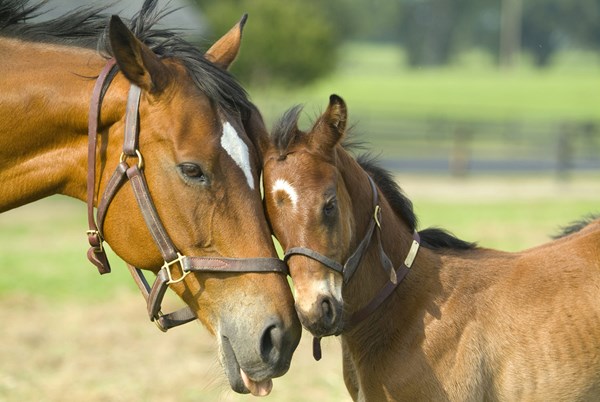 Credit: Thinkstock Many variables play a role in forming the dominant/submissive relationships between horses; however, the maternal effect upon the dominance position of the off spring still remains unclear, as do the possible mechanisms of transference (“inheritance”).
Credit: Thinkstock Many variables play a role in forming the dominant/submissive relationships between horses; however, the maternal effect upon the dominance position of the off spring still remains unclear, as do the possible mechanisms of transference (“inheritance”).Researchers in the Czech Republic recently studied the factors in influencing dominance position in young horses, with emphasis on the role of the mother. Horses form stable linear dominance hierarchies based on agonistic interactions. Higher dominance positions are believed to be connected, in both genders, to better condition and higher reproductive success. Many variables play a role in forming the dominant/submissive relationships between horses; however, the maternal effect upon the dominance position of the off spring still remains unclear, as do the possible mechanisms of transference (“inheritance”).
Researchers hypothesized that the maternal dominance position, plus differences in suckling parameters or maternal style, may be responsible for later outcome of the off spring’s dominance position, characterized by two variables: index of fighting success and rate of winning encounters. Researchers studied eight groups of loose-housed lactating mares with foals and subsequently four groups of the same foals at three years of age.
Researchers found that the impact of age on the dominance position of the young horses and residence in the group impacted dominance position, not the maternal dominance position. Older foals reached higher dominance positions, independent of the dominance position, age, or experience of the mother. Researchers did not find support for direct inheritance of maternal rank on foal dominance position.
However, foals born to the same mare in two consecutive seasons tended to have the same dominance position they obtained at three years of age. This suggests an important constant effect of the mother on the social success of her progeny. However, researchers did not find a significant effect of any of the tested variables describing maternal characteristics or maternal care.
Dominance position depended significantly on the foal’s age at observation, and the residence in the herd formed via sequential introducing of later-weaned groups of foals. The most dominant horses were mainly recruited from the first-weaned group of the season, and thus were also the oldest individuals in the herd. Further research is needed to discover the role of foal personality and mare style, and their links to possible dominance behaviors in a herd.
For more information, click here.


